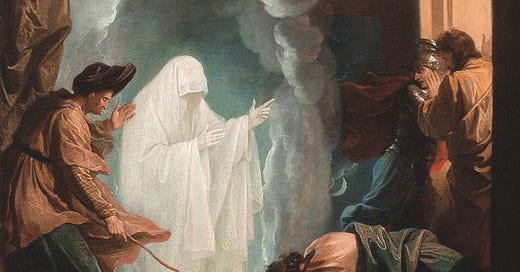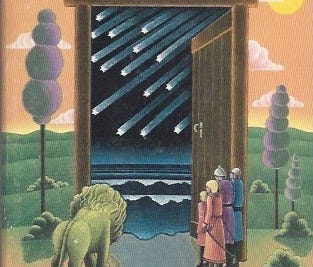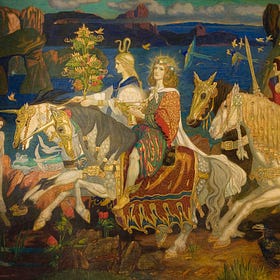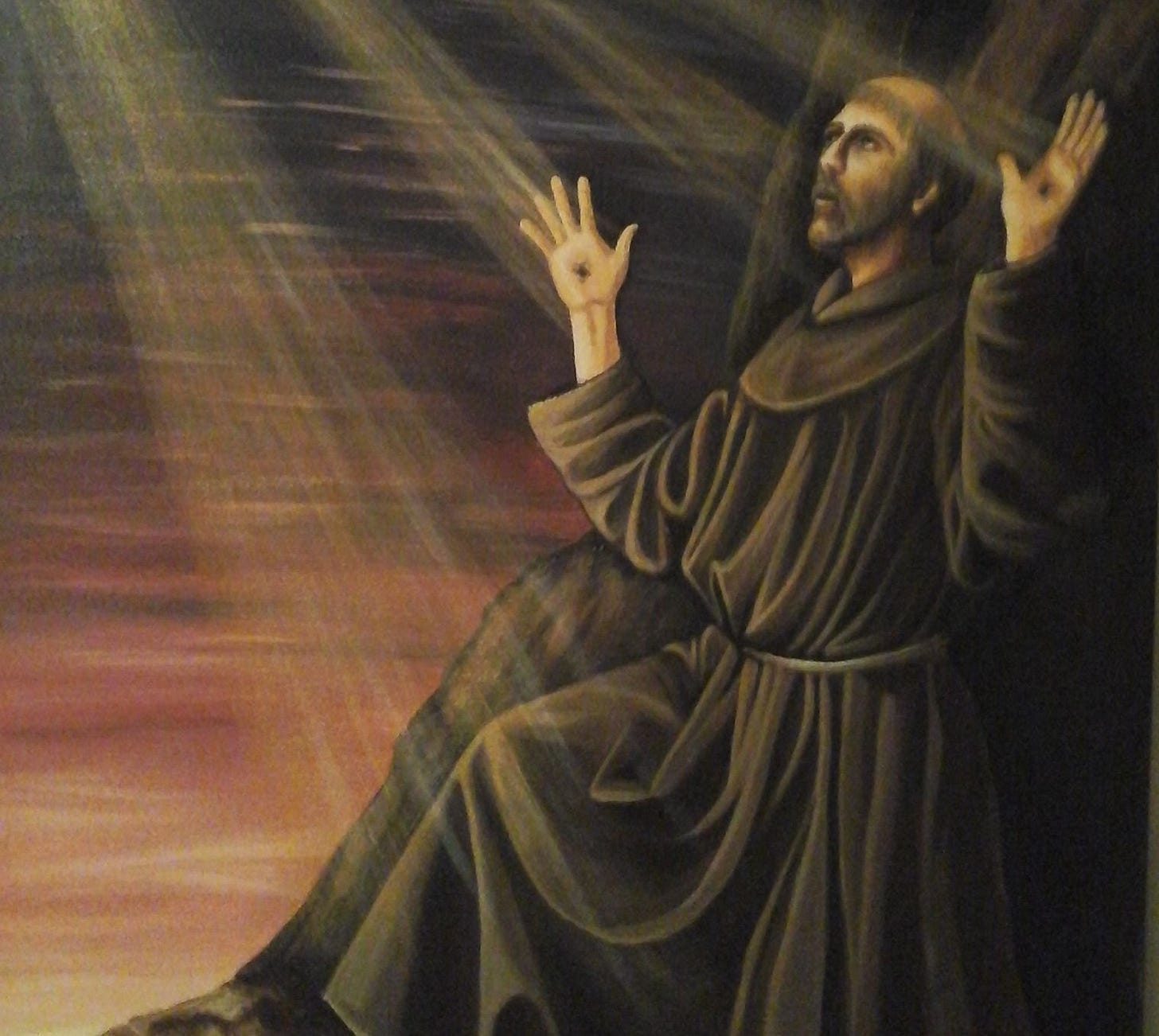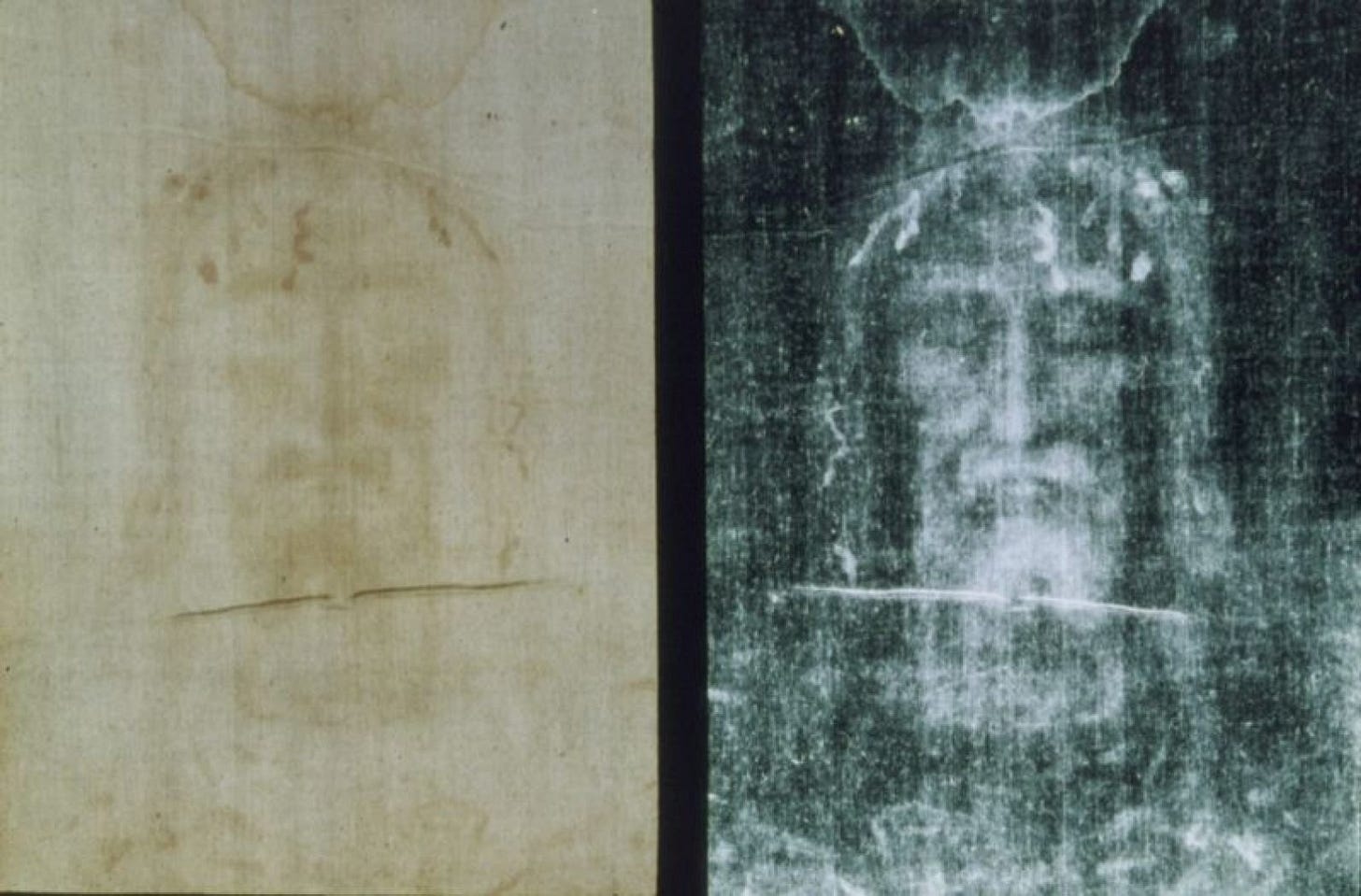The Heavenly Dimension
Portals to the Twilight Zone Part Two: Simulacra v. the Transcendent
Thanks to my Dad, , for helping to write this essay with me.
In a recent article, I wrote about portals to the Twilight Zone, dark re-enchantment, magic, and the Fey. I described the Fey in the original Celtic sense—fanciful creatures who were mischievous, appearing to men or women and making deals with them. A classic example is Rumpelstiltskin. From that, we explored a popular TV show in the sixties about a fifth dimension—the Twilight Zone—coming full circle to how critically accessible the Fey realm is now due to advancements in technology and what is available on our smartphones. I concluded that article by discussing the modern portals to this Fey realm, emphasizing our need to be alert, consistent, and vigilant in protecting our minds and spirits from mischievous influences.
Portals to the Twilight Zone
Four hundred or more years ago, walking around the woods at night, in nearly any country, anywhere in the world you would have been at risk. To use the English word, you would be at the mercy of the Fey, indeed, anywhere you would have walked you are at the mercy of these fanciful creatures, sometimes good, sometimes bad, always mischievous. Time and again there are stories of men, contacting, and noticeably
That article led me to another reflection—the counterfeit versus the real. It would be wrong, incomplete even, to leave the discussion without speaking about the truly transcendent. If there is a counterfeit supernatural realm, then surely there is also a legitimate one. The Bible itself does not shy away from the supernatural; rather, it affirms it time and time again, showing that divine intervention and spiritual encounters are integral to understanding the Christian’s experience.
I know a man in Christ who fourteen years ago—whether in the body I do not know, or whether out of the body I do not know, God knows—such a one was caught up to the third heaven. 3 And I know such a man—whether in the body or out of the body I do not know, God knows— 4 how he was caught up into Paradise and heard inexpressible words, which it is not lawful for a man to utter. (St. Paul describing his ecstatic experience in 2 Cor. 12:2-4)
Consider Jacob and the open portal he saw in Bethel—the house of God—where angels ascended and descended from heaven (Genesis 28:12-17). Abraham entertained angels in the form of divine messengers (Genesis 18:1-2; Hebrews 13:2) and later entered into an extreme darkness (Genesis 15:12-17); Moses spoke with God face to face in the cleft of the rock, witnessing His presence (Exodus 33:18-23). Moreover, Moses facilitated, by the gifts of God, a battle the Egyptian gods personified through their material forms.1 (Exodus 20:21)! Manoah, Samson's father, was visited by an angel with a prophetic revelation about his son (Judges 13:2-20). Gideon experienced angelic interaction when God called him (Judges 6:11-24) and again through his experiments with the fleece, seeking confirmation from God (Judges 6:36-40).
King Saul sought guidance from the witch at Endor - who was notably surprised when the “Elohim” emerged - and saw a visitation from the spirit of Samuel, illustrating the danger of seeking supernatural guidance outside of God’s will (1 Samuel 28:7-20). The prophet Ezekiel had visions of the heavenly realm, witnessing the cherubim and its four faces—the man, ox, eagle, and lion—and the wheel within the wheel, a sight beyond human comprehension (Ezekiel 1:4-28; Ezekiel 10:8-22).
The Old Testament is filled with encounters of men and women experiencing—and even being invited into—a supernatural reality that often enriched or even saved their lives. These encounters were not random or meaningless but orchestrated by God for divine revelation, protection, and guidance. The New Testament is no different. St. Paul tells the story of being caught in the third heaven, witnessing things that defied natural laws and human understanding (2 Corinthians 12:2-4). Peter glimpsed into the supernatural when he witnessed Jesus’ transfiguration, standing alongside Elijah and Moses (Matthew 17:1-3). Recognizing the gravity of this moment, St. Peter even asked if he could build tabernacles to remain in that sacred space permanently (Matthew 17:4). Later, emphasizing the power of the Spirit, St. Peter would disabuse Simon the sorcerer of the idea that the Holy Spirit was something to be purchased, like a trick (Acts 8:9-25).
The point is this: There is a counterfeit supernatural realm filled with deception, confusion, and illusion. The Fey creatures and spirits that mislead and distort reality are not mere fantasies but intentional distractions. Their goal is to derail, frustrate, and obscure the truth (2 Corinthians 11:14-15). They offer enticing yet hollow spiritual experiences that draw people away from God’s truth (1 Timothy 4:1). Nevertheless, just as there is a counterfeit, there is also an authentic supernatural reality. This is the realm of God’s Spirit, the divine dimension believers are invited to access (John 4:24).
Scripture teaches that God is spirit, and those who worship Him must do so in spirit and in truth (John 4:23-24). In the prayer book, we are told that we receive our Lord “by faith” and in a “spiritual manner.” The necessity of worshiping in spirit speaks to our ability to engage with the divine reality through the Sacraments given to us. The Sacraments of our Lord are the way in which we engage in the spiritual dimension, bringing the transcendent down into our reality. Despite the prevalence of counterfeit encounters, there are legitimate invitations into the supernatural realm for those committed to integrity and biblical truth (1 Corinthians 10:1-4). By using Scripture and tradition as our guide and lens, we can discern these encounters and understand them within the context of God’s will (1 John 4:1). We need not partake in the counterfeit forms passed off as truth, psychedelics, for instance. Some, even Christians, might say that these drugs are beneficial; however, who, after returning from a “trip,” has a deeper understanding of the ways in which they need Christ?
For centuries, the Christian tradition has honored the prophetic ministry—the ministry of the seer, the revelatory gifts such as words of knowledge and wisdom (1 Corinthians 12:7-11). Many of the great Christian mystics and theologians throughout history recognized the reality of supernatural experiences. St. Paul himself urged believers to pursue dreams and visions and to seek spiritual encounters with discernment (Acts 2:17; 1 Corinthians 14:1). He acknowledged that such experiences might not always be explainable by natural means, but he did not dismiss them. Instead, he saw them as a crucial aspect of a vibrant faith (Ephesians 1:17-18). To neglect or deny the supernatural dimension of Christian life is to embrace an incomplete faith—one that is sterilized by modern rationalism rather than enriched by the divine.
Consider the Stigmata, accounts of those who so long dwell upon the passion of our Lord that they receive the same wounds supernaturally. St. Francis received them, Padre Pio very famously received them, and even a Swiss farmer, Johann Jetzer, is reputed to have received them.2 St. Thomas Aquinas is widely reputed to have had a mystical revelation that left his life’s work like “straw.” This is quite remarkable when considering the Summa; one can never say that St. Thomas was “irrational.” St. Thomas was the summit of rationality, yet he still believed in the supernatural.3 Evoking a similar vision that St. Paul had, which was beyond human ability to describe.
The Shroud of Turin is another famous supernatural artifact that is undoubtedly the most studied. Recent studies have conclusively confirmed it dates back to the time of Christ. However, science cannot explain how the depiction of Christ was imprinted upon it. One of the most fascinating things about the Shroud is that it is a negative image. Thus, its true glory can be seen through the negative (which is actually the positive) image of it. For those who didn’t follow me, old cameras used to render a negative image, which would then be rendered into positive images. However, when the shroud was first pictured, the photographer, looking at the photo-negative, beheld the image on the right, a positive image of a 1st-century Jewish man.
While modern science struggles to categorize and explain the supernatural, the biblical perspective does not hesitate. The scriptures encourage us to acknowledge these encounters and seek them in a manner that aligns with God’s truth (Matthew 7:7-8). When approached rightly, the supernatural is not a realm of misery but one of hope, encouragement, and divine revelation (Jeremiah 33:3). God invites believers to step into His reality, not in fear, but with faith and expectation (Hebrews 11:6).
The supernatural is real. But so is the counterfeit. The task before us is to discern the difference, to walk in the light of truth rather than be deceived by shadows (Ephesians 5:8-11). And in that pursuit, we open ourselves not to the Fey realm but to the authentic, divine reality that God has made available to His people. Sunday, February 16th, was the sixth Sunday of Epiphany, where 1 Corinthians 15:12-20 was read. The premise is that we have no hope in this life if Christ did not rise from the dead. Essentially articulating that the bible without the supernatural is pointless, or worse, a fraudulent representation of God.
St. Paul admonishes us to press on toward the high mark of our calling in Christ Jesus (Philippians 3:14). He was not content with a shallow faith but sought the fullness of spiritual encounters, proclaiming, "I will go on to visions and revelations of the Lord" (2 Corinthians 12:1). Just as St. Paul pursued the deeper things of God, we too must seek first the kingdom of God and His righteousness (Matthew 6:33). This is not an invitation to blind mysticism but a call to experience the supernatural reality of God through faith, prayer, and adherence to His Word and Sacraments.
We are invited to only read about the supernatural in scripture and experience and embrace it through the Lord’s Sacraments. The gifts of the Spirit, prophetic insight, and divine encounters are not remnants of the past; they are integral to the continuous reality of God’s kingdom (Acts 1:8). To reject this dimension of our faith is to diminish our privilege as God's children.
Accordingly, let us press on toward a vision of reality that is enchanted and enchanting. Not believing in a sterile ball hurtling through space which just happened to be in the right place at the time to develop sentience. Rather, as the Scriptures and thousands of years of Church history have taught us, to press into the fullness of the heavenly reality. Seeing an enchanted world IS seeing the world as God has designed it, for us to witness his glory. Yet again, that is only the beginning of pressing in, as CS Lewis evocatively told us, the realm of God is unending. We can always, and must always, go “FURTHER UP, AND FURTHER IN!”
The Egyptians associated each thing attacked by one of the plagues with a “god,” the god of the Nile, Hapi, slaughtered covered in blood. Ra, the god of the sun, blotted out, Isis, the god of healing, couldn’t prevent the boils.


